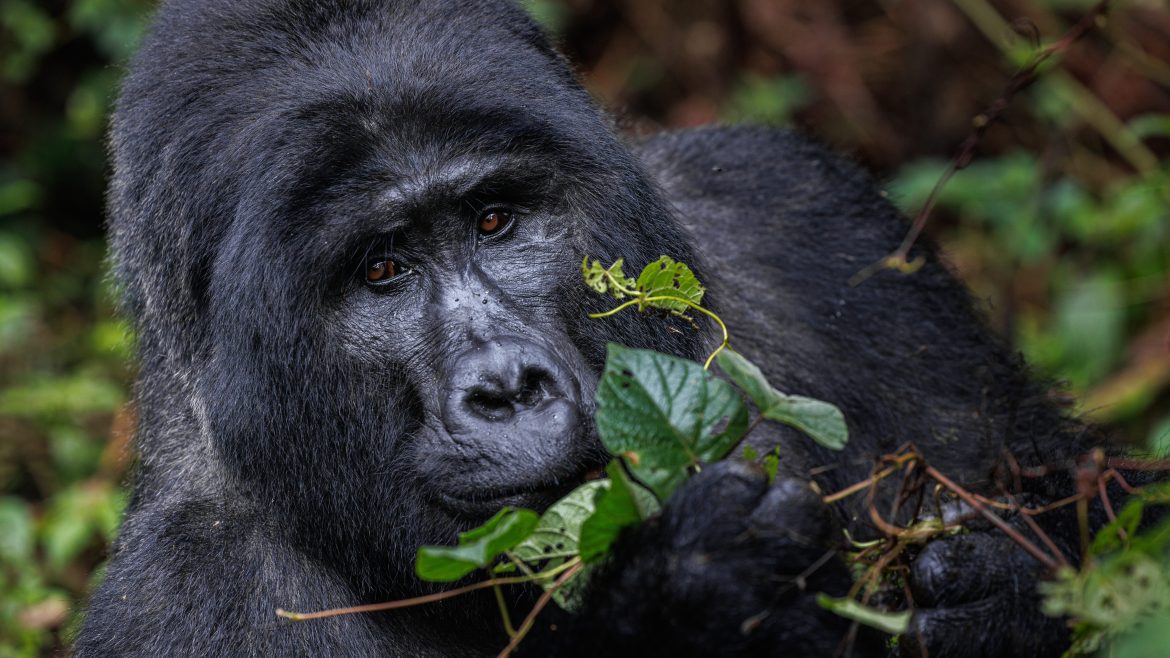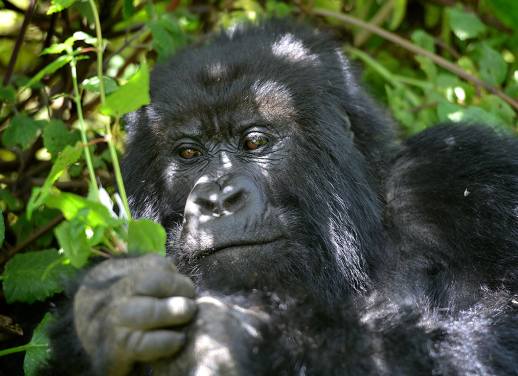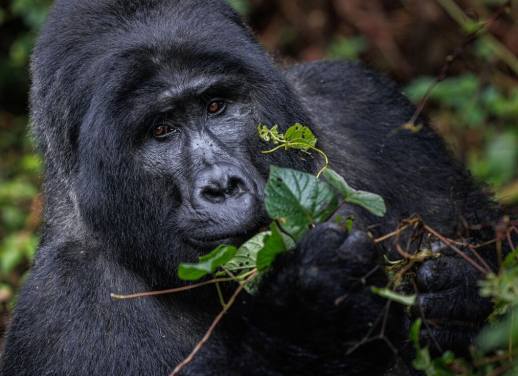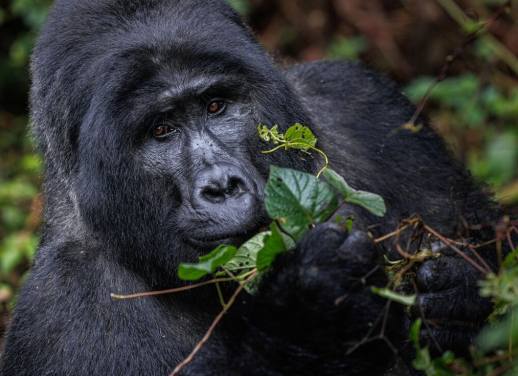When Susan Portnoy left for a gorilla-themed adventure in Uganda’s rainforests, she was hoping for a close counter with these great apes. She found something even more profound – a genuine connection.
The silverback emerged from a dense tangle of trees like an apparition. It was Tinfayo (meaning ‘I don’t care’), the head of the Mishaya family. True to his name, he behaved like our merry band of nine travellers was invisible. He barely acknowledged our presence before calmly disappearing into the woodlands of Uganda’s Bwindi Forest National Park.
I, on the other hand, was dying! ‘It’s a silverback! It’s a silverback!’ My thoughts screamed.
Gloria, a ten-year veteran of the park and our lead guide, along with local trackers, gestured us forward. Our winding, uphill trek had followed a narrow elephant path until then, but to follow the gorillas, we’d have to bushwack through thick brush and shoe-sucking mud. We were all in.
We found Tinfayo sitting tall in a pot-bellied profile, framed by foliage like a museum diorama come to life. His thick fingers plucked leaves from slender branches and shoved them into his mouth, greedily reaching for more as he chewed. Tugging my arm, a tracker guided me to a better vantage point facing the 180-kilo silverback, and within moments, our eyes locked. I felt like I’d won the lottery.
I’ve always felt the phrase ‘an embarrassment of riches’ was pretentious. But it’s fitting when you’re an animal lover standing in the middle of a family of gorillas.
It was the seventh day of my adventure in Rwanda and Uganda with Intrepid, a nine-day gorilla-themed trip. In addition to watching silverbacks, we also travelled hundreds of miles of dramatic landscapes and rural villages and encountered a wide variety of wildlife. On a boat cruise, we spotted so many hippos we dubbed the area ‘Hippo Soup.’
We also learned about innovative conservation techniques developed by a Ugandan farmer living on the border of Queen Elizabeth National Park. Using various homemade inventions, he’s kept elephants and other wildlife from crossing onto his land and destroying his crops. The most impressive creation was the elephant trench, a 20-kilometre-long, two-metre-wide, two-metre-deep channel dug by hand.
My journey in Rwanda began on an airport shuttle with Idris Elba (yes, you read that right), the gifted British actor with a long list of impressive film credits. Despite the dark and my 18-hours-in-coach daze, I recognised his deep, husky voice before I realised it belonged to the broad-shouldered man in front of me. Making room for his wife, he climbed into the shuttle that would take us from the tarmac to the terminal at Kigali National Airport.
Two days later, I saw the Elbas again. This time under a brilliant blue sky, in the foothills of Volcanos National Park. Part of the Virunga Massif, this park has a chain of dormant volcanos shared with Uganda and the Democratic Republic of Congo. Like Bwindi, this park is also home to the endangered mountain gorillas.
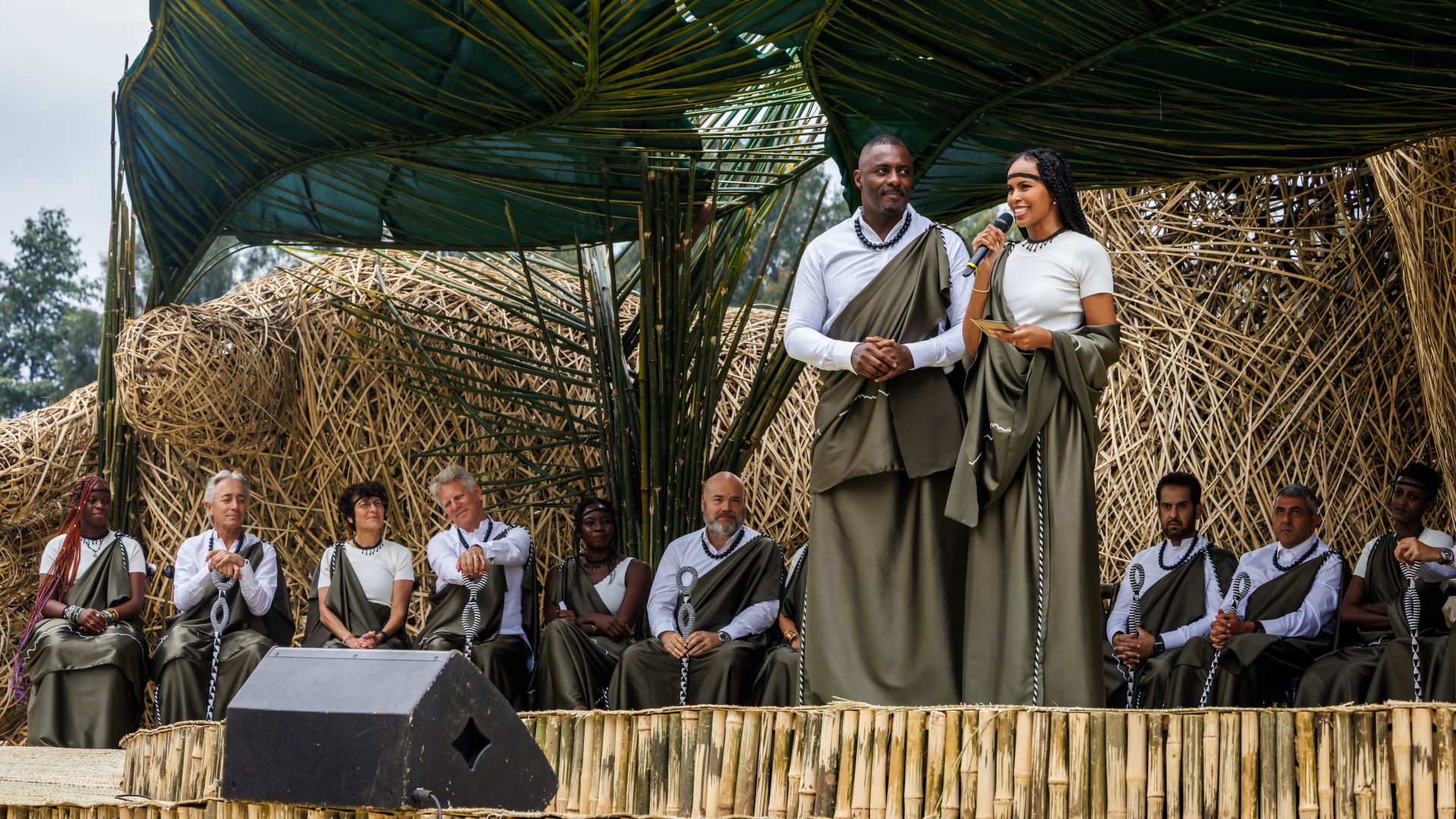
We were there for Rwanda’s 19th annual Gorilla Naming Ceremony: Kwita Izina. It’s a huge celebration based on the Rwandan custom of naming a newborn in the presence of friends and family. Since its inception, Kwita Izina has named 374 infant gorillas in absentia.
The festivities commemorate the nation’s successful efforts to protect the gorillas and their habitat. It’s a feat made possible by the steadfast commitment of the region’s local communities which receive five percent of the revenue generated by gorilla tourism.
Historically, hard economic conditions caused the locals to hunt mountain gorillas almost to extinction. However, in the last couple of decades, there has been a dramatic turnaround, and the people are also trying to protect their national treasures rather than allowing them to disappear. During this time, the gorilla population has grown to a little over 1000, an increase of 23 percent. They are one of the world’s only endangered species whose numbers are rising.


As I got closer to the Kwita Izina grounds, I heard the crowd before I saw it. Thousands of young people from neighbouring villages sang, danced and waved Rwandan flags. It was like a championship home game, a show of passion and pride. Fifty thousand people turned out for the televised event, which included a string of musical performances and traditional tribal dances.
Our seats were in a large VIP tent facing a stage dwarfed by a towering bamboo sculpture of a gorilla family (we’re talking King Kong big). There were many notable guests at the event, including celebrities like the Elbas, diplomats, sports icons and conservationists, many of whom were this year’s namers. One namer (or pair of namers) for each gorilla born in the past 12 months took turns revealing the chosen name for the baby gorilla matched to them.
The Elbas introduced Narame, translated from Kinyarwanda as long life. He is the son of Mudakama of the Mutobo family. ‘Mudakama has previously lost two children,’ said Sabrina Dhowre Elba, with her husband beside her. ‘We hope, more than anything, that this child lives a long life.’
In a tender tribute to late actor Chadwick Boseman, actress Danai Gurira, who played Okoye in Wakanda Forever, named her baby gorilla Aguka T’Challa, which means expansion, honouring Aguka’s mother, Ishyaka, who raised many children. T’Challa was Boseman’s character in the movie.
‘There is little as fulfilling as to celebrate healthy new lives,’ said Her Excellency, The First Lady of Rwanda, Jeannette Kagame, who closed the ceremony. ‘And our adorable baby gorillas are certainly worth this occasion.’
‘I once stood… as a proud namer of adorable, healthy twin baby gorillas [who are still alive today],’ she added. ‘This was 19 years ago. To us, mountain gorillas represent more than a source of tourism or adventurous entertainment. To us, our gorillas are the custodians of the nature we truly cherish.’


‘I’ve started the clock,’ announced Gloria four days later as we first laid eyes on Tinfayo. ‘In 60 minutes, we must go.’
Trekking after gorillas can take hours, but visitors only have 60 minutes to marvel at them to minimise human impact. I learned that, among other things, from Dr Okwir Ricky Okello, a field veterinarian with Gorilla Doctors – an Intrepid Foundation partner and organisation of vets and researchers – monitoring and treating the habituated mountain gorillas throughout the massif.
In 2020, Dr Ricky was instrumental in providing medical care to Tinfayo, who was severely injured, enabling him to return to his family. On the evening prior to our trek, Dr Ricky and his colleague Dr Nelson Bukamba visited our group at our hotel to speak with us about their work for a few hours.
The Gorilla Doctors monitor approximately 20 habituated gorilla troops. Habituation (where they are comfortable being around humans) is a slow process, taking nearly two years of daily visits before travellers can begin to observe them. Every month, the vets assess each family for disease or injury. Incredibly, all the medical care provided, including x-rays and basic surgery, is done in the forest.
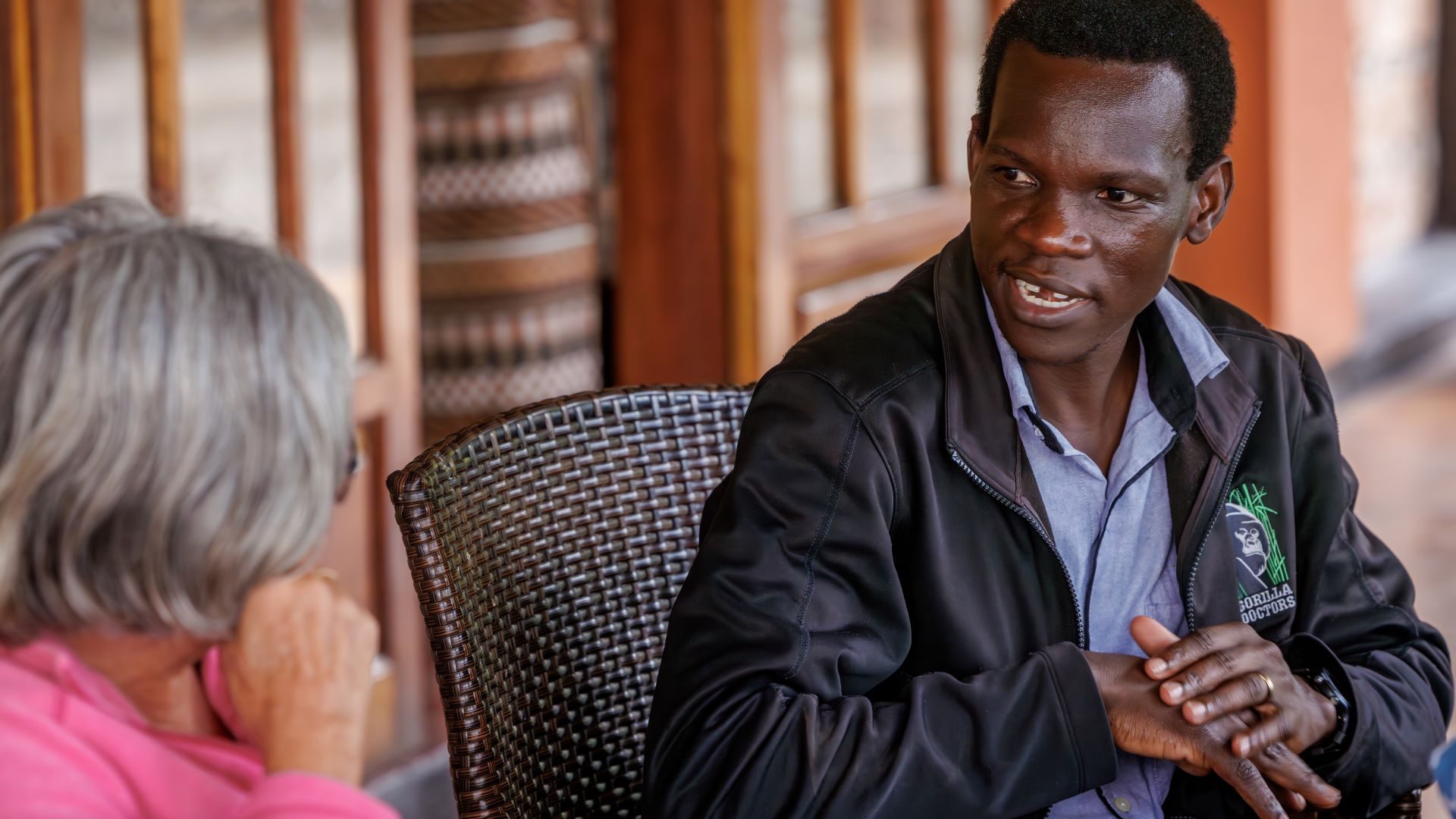
I’ve always felt the phrase ‘an embarrassment of riches’ was pretentious. But it’s fitting when you’re an animal lover standing in the middle of a family of gorillas.
A charismatic 13-month-old was putting on a show, beating her tiny chest, dangling from branches and rolling in leaves in full view. She had our hearts wrapped around her hairy little fingers. A few feet away, a mother nursed a newborn. Nshongi, an 18-year-old female Gloria favoured, chewed her breakfast with gusto.
Tinfayo used his teeth to scrape leaves off a vine he was pulling from left to right. Periodically, his dark amber eyes met mine, filling me with a great sense of awe. For those few seconds, we connected. At least it felt that way. Me and Tinfayo sharing a beautiful morning in the remote reaches of the Ugandan rainforest.
Learn more about the Intrepid Foundation’s partnership with Gorilla Doctors and find your own small group trekking adventure with Uganda and Rwanda’s great apes.
All images by Susan Portnoy.

